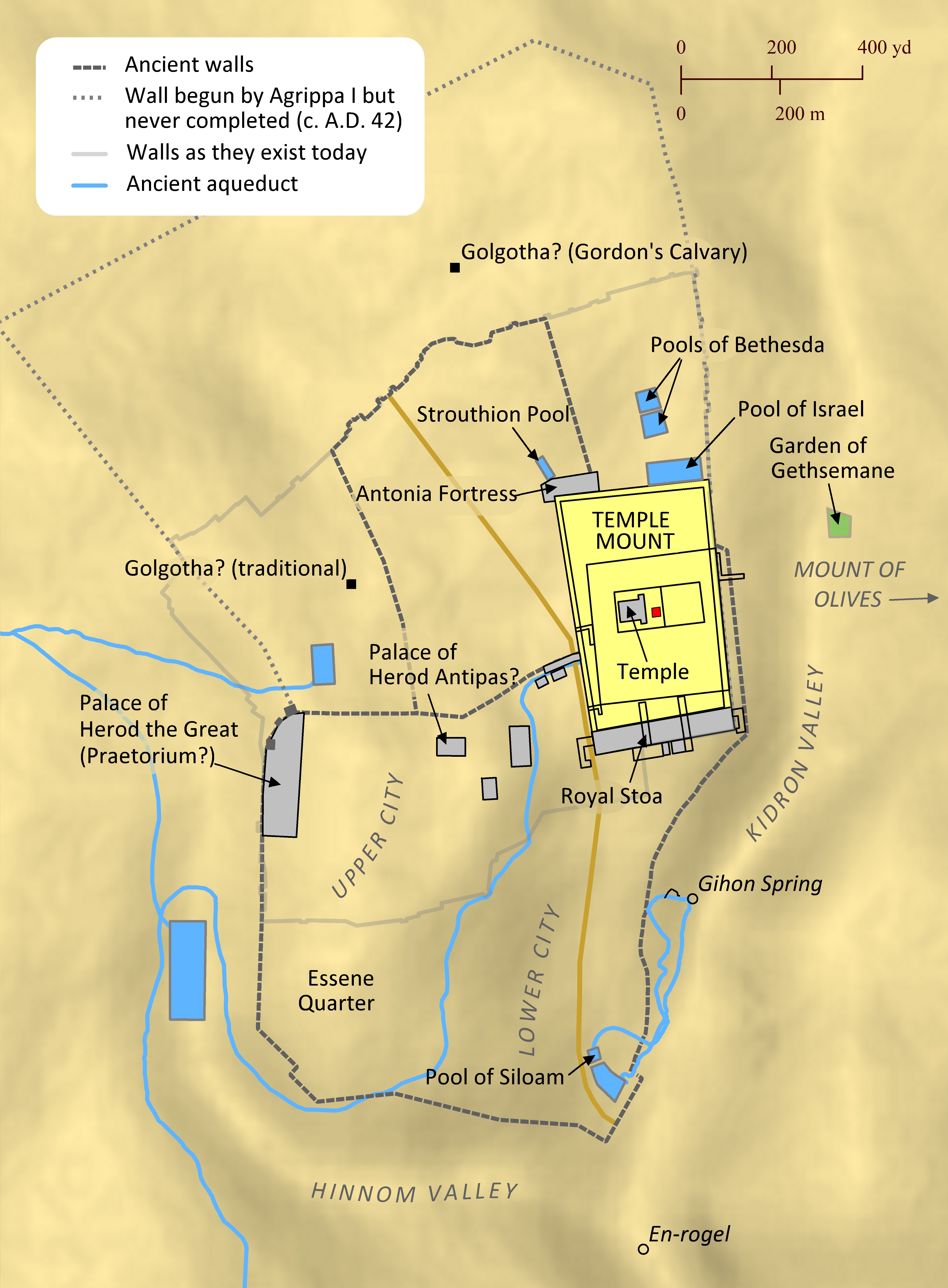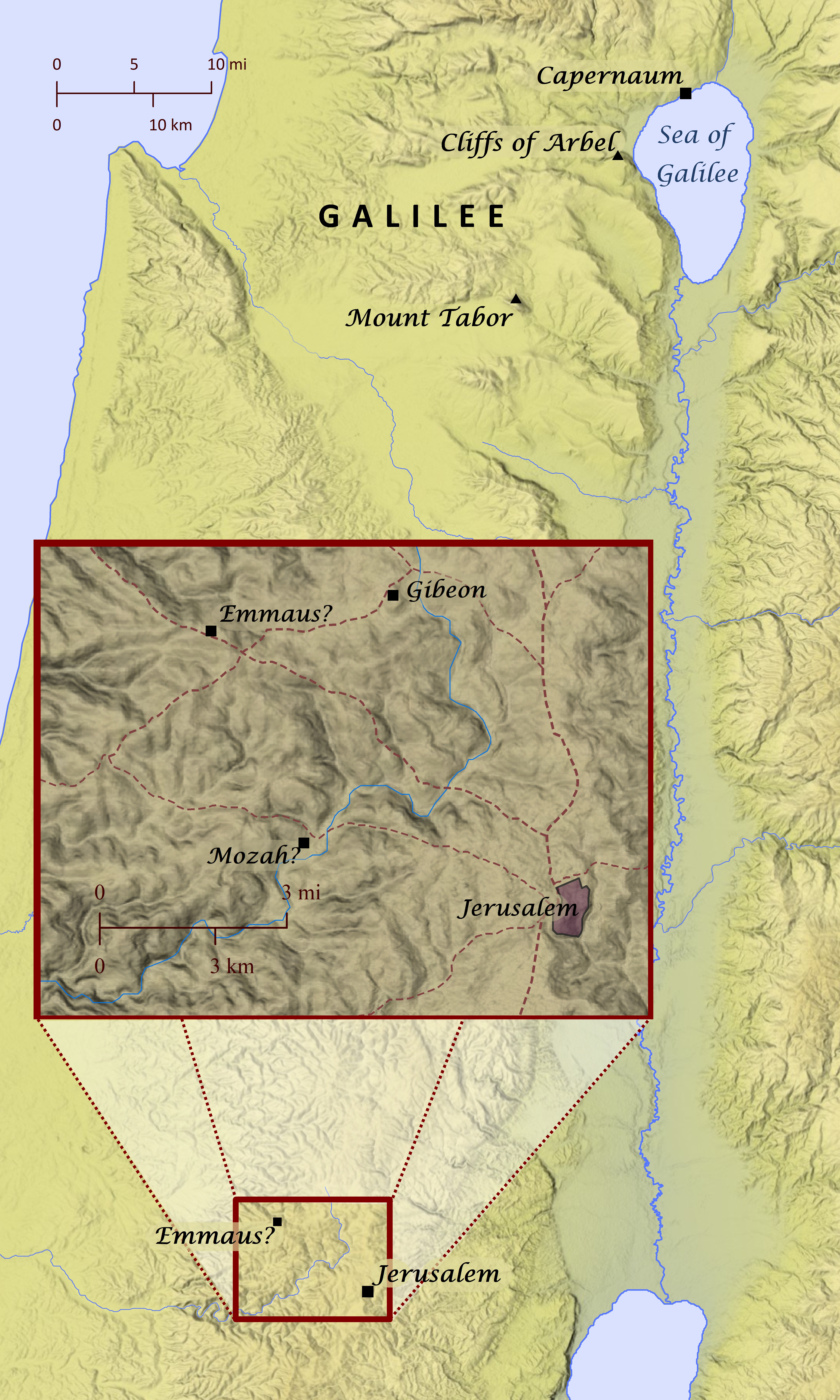Note: This view shows ‘verses’ which are not natural language units and hence sometimes only part of a sentence will be visible—click on any Bible version abbreviation down the left-hand side to see the verse in more of its context. Normally the OET discourages the reading of individual ‘verses’, but this view is only designed as a tool for doing comparisons of different translations—the older translations are further down the page (so you can read up from the bottom to trace the English translation history). The OET segments on this page are still very early looks into the unfinished texts of the Open English Translation of the Bible—please double-check these texts in advance before using in public.
AICNT To them he also presented himself alive after his suffering, with many convincing proofs, appearing to them over a period of forty days and speaking about the kingdom of God.
OEB With abundant proofs, he showed himself to them, still living, after his death; appearing to them from time to time during forty days, and speaking of all that related to the kingdom of God.
WEBBE To these he also showed himself alive after he suffered, by many proofs, appearing to them over a period of forty days and speaking about God’s Kingdom.
WMBB (Same as above)
NET To the same apostles also, after his suffering, he presented himself alive with many convincing proofs. He was seen by them over a forty-day period and spoke about matters concerning the kingdom of God.
LSV to whom He also presented Himself alive after His suffering, in many certain proofs, being seen by them through forty days, and speaking the things concerning the Kingdom of God.
FBV Over the course of forty days after the death he suffered, he showed himself to them, proving that he was alive with convincing evidence. He appeared to them, and told them about the kingdom of God.
TCNT He presented himself alive to them, after his suffering, by many convincing proofs, appearing to them over the course of forty days and speaking about the kingdom of God.
T4T After he had suffered and died on the cross, he became alive again. As he appeared to them often during the next 40 days, the apostles saw him many times. He proved to them in many ways that he was alive again. He talked with them about how God would rule [MET] the lives of people who accepted him as their king.
LEB to whom he also presented himself alive after he suffered, with many convincing proofs, appearing to them over a period of forty days and speaking the things about the kingdom of God.
BBE And to whom he gave clear and certain signs that he was living, after his death; for he was seen by them for forty days, and gave them teaching about the kingdom of God:
Moff After his sufferings he had shown them that he was alive by a number of proofs, revealing himself to them for forty days and discussing the affairs of God's Realm.
Wymth He had also, after He suffered, shown Himself alive to them with many sure proofs, appearing to them at intervals during forty days, and speaking of the Kingdom of God.
ASV to whom he also showed himself alive after his passion by many proofs, appearing unto them by the space of forty days, and speaking the things concerning the kingdom of God:
DRA To whom also he shewed himself alive after his passion, by many proofs, for forty days appearing to them, and speaking of the kingdom of God.
YLT to whom also he did present himself alive after his suffering, in many certain proofs, through forty days being seen by them, and speaking the things concerning the reign of God.
Drby to whom also he presented himself living, after he had suffered, with many proofs; being seen by them during forty days, and speaking of the things which concern the kingdom of [fn]God;
RV To whom he also shewed himself alive after his passion by many proofs, appearing unto them by the space of forty days, and speaking the things concerning the kingdom of God:
(To whom he also showed himself alive after his passion by many proofs, appearing unto them by the space of forty days, and speaking the things concerning the kingdom of God: )
SLT To them also he presented himself living, after he suffered, by many infallible signs, through forty days seen to them, and speaking the things of the kingdom of God:
Wbstr To whom also he showed himself alive after his passion, by many infallible proofs, being seen by them forty days, and speaking of the things pertaining to the kingdom of God:
KJB-1769 To whom also he shewed himself alive after his passion by many infallible proofs, being seen of them forty days, and speaking of the things pertaining to the kingdom of God:
(To whom also he showed himself alive after his passion by many infallible proofs, being seen of them forty days, and speaking of the things pertaining to the kingdom of God: )
KJB-1611 To whom also he shewed himselfe aliue after his passion, by many infallible proofes, being seene of them fourty dayes, and speaking of the things perteining to the kingdome of God:
(To whom also he showed himself alive after his passion, by many infallible proofes, being seen of them forty days, and speaking of the things pertaining to the kingdom of God:)
Bshps To whom also he shewed hym selfe alyue after his passion, and that by manye tokens, appearyng vnto them fourtie dayes, and speaking of the kingdome of God,
(To whom also he showed himself alive after his passion, and that by many tokens, appearing unto them forty days, and speaking of the kingdom of God,)
Gnva To whome also he presented himselfe aliue after that he had suffered, by many infallible tokens, being seene of them by the space of fourtie daies, and speaking of those thinges which appertaine to the kingdome of God.
(To whom also he presented himself alive after that he had suffered, by many infallible tokens, being seen of them by the space of forty days, and speaking of those things which appertain/relate_to to the kingdom of God. )
Cvdl to who also he shewed himself alyue after his passion, by many tokes, and appeared vnto them fourtye dayes longe, and spake vnto them of the kyngdome of God.
(to who also he showed himself alive after his passion, by many tokes, and appeared unto them forty days long, and spake unto them of the kingdom of God.)
TNT to whom also he shewed him selfe alyve after his passion by many tokens apperynge vnto them fourty dayes and speakynge of the kyngdome of god
(to whom also he showed himself alive after his passion by many tokens appearing unto them forty days and speaking of the kingdom of god )
Wycl to whiche he schewide hym silf `alyue aftir his passioun, by many argumentis, apperinge to hem fourti daies, and spekinge of the rewme of God.
(to which he showed himself alive after his passioun, by many argumentis, appearing to them forty days, and speaking of the realm of God.)
Luth welchen er sich nach seinem Leiden lebendig erzeiget hatte durch mancherlei Erweisung; und ließ sich sehen unter ihnen vierzig Tage lang und redete mit ihnen vom Reich Gottes.
(which_(ones) he itself/yourself/themselves after his Leiden lively/alive produced had through various Erweisung; and left/let itself/yourself/themselves see under to_them forty days long and talked with to_them from_the kingdom God’s.)
ClVg quibus et præbuit seipsum vivum post passionem suam in multis argumentis, per dies quadraginta apparens eis, et loquens de regno Dei.[fn]
(to_whom and beforebuit himself alive after passion his_own in/into/on many argumentis, through days forty apparens to_them, and speaking from/about kingdom of_God. )
UGNT οἷς καὶ παρέστησεν ἑαυτὸν ζῶντα, μετὰ τὸ παθεῖν αὐτὸν, ἐν πολλοῖς τεκμηρίοις δι’ ἡμερῶν τεσσεράκοντα, ὀπτανόμενος αὐτοῖς, καὶ λέγων τὰ περὶ τῆς Βασιλείας τοῦ Θεοῦ.
(hois kai parestaʸsen heauton zōnta, meta to pathein auton, en pollois tekmaʸriois di’ haʸmerōn tesserakonta, optanomenos autois, kai legōn ta peri taʸs Basileias tou Theou.)
SBL-GNT οἷς καὶ παρέστησεν ἑαυτὸν ζῶντα μετὰ τὸ παθεῖν αὐτὸν ἐν πολλοῖς τεκμηρίοις, διʼ ἡμερῶν τεσσεράκοντα ὀπτανόμενος αὐτοῖς καὶ λέγων τὰ περὶ τῆς βασιλείας τοῦ θεοῦ·
(hois kai parestaʸsen heauton zōnta meta to pathein auton en pollois tekmaʸriois, diʼ haʸmerōn tesserakonta optanomenos autois kai legōn ta peri taʸs basileias tou theou;)
RP-GNT οἷς καὶ παρέστησεν ἑαυτὸν ζῶντα μετὰ τὸ παθεῖν αὐτὸν ἐν πολλοῖς τεκμηρίοις, δι' ἡμερῶν τεσσαράκοντα ὀπτανόμενος αὐτοῖς, καὶ λέγων τὰ περὶ τῆς βασιλείας τοῦ θεοῦ.
(hois kai parestaʸsen heauton zōnta meta to pathein auton en pollois tekmaʸriois, di' haʸmerōn tessarakonta optanomenos autois, kai legōn ta peri taʸs basileias tou theou.)
TC-GNT οἷς καὶ παρέστησεν ἑαυτὸν ζῶντα μετὰ τὸ παθεῖν αὐτὸν ἐν πολλοῖς τεκμηρίοις, δι᾽ ἡμερῶν [fn]τεσσαράκοντα ὀπτανόμενος αὐτοῖς, καὶ λέγων τὰ περὶ τῆς βασιλείας τοῦ Θεοῦ.
(hois kai parestaʸsen heauton zōnta meta to pathein auton en pollois tekmaʸriois, di haʸmerōn tessarakonta optanomenos autois, kai legōn ta peri taʸs basileias tou Theou. )
Key for above GNTs: yellow:punctuation differs, red:words differ (from our SR-GNT base).
UTN uW Translation Notes:
οἷς καὶ παρέστησεν ἑαυτὸν ζῶντα, μετὰ τὸ παθεῖν αὐτὸν, ἐν πολλοῖς τεκμηρίοις
˱to˲_whom also ˱he˲_presented himself living after the_‹time› ˓to˒_suffer him with many proofs
As the General Notes to this chapter suggest, it be helpful to begin a new sentence here. Alternate translation: [Jesus also presented himself alive with many proofs to his apostles after he had suffered]
Note 1 topic: figures-of-speech / explicit
μετὰ τὸ παθεῖν αὐτὸν
after the_‹time› ˓to˒_suffer him
This refers to how Jesus suffered and died on the cross. Alternate translation: [after he had suffered and died on the cross]
Note 2 topic: figures-of-speech / explicit
ἐν πολλοῖς τεκμηρίοις
with many proofs
The word translated proofs describes items of evidence that are decisive and convincing. Alternate translation: [with many definitive proofs]
Note 3 topic: figures-of-speech / explicit
δι’ ἡμερῶν τεσσεράκοντα, ὀπτανόμενος αὐτοῖς, καὶ λέγων
through days forty appearing ˱to˲_them and speaking
While the antecedent of whom is “the apostles whom he had chosen” in the previous verse, Jesus actually appeared to many other disciples besides his apostles. If it would be helpful to your readers, you could indicate that explicitly. It may be helpful to begin a new sentence here. Alternate translation: [For 40 days he appeared to his apostles and many of his other disciples, and he spoke]
Note 4 topic: figures-of-speech / abstractnouns
τὰ περὶ τῆς Βασιλείας τοῦ Θεοῦ
the_‹things› concerning the Kingdom ¬the ˱of˲_God
See the discussion of the concept of the kingdom of God in Part 2 of the General Introduction to Acts. If your language does not use an abstract noun for the idea behind the word kingdom, you could express this with a verb such as “rule,” as UST does.

